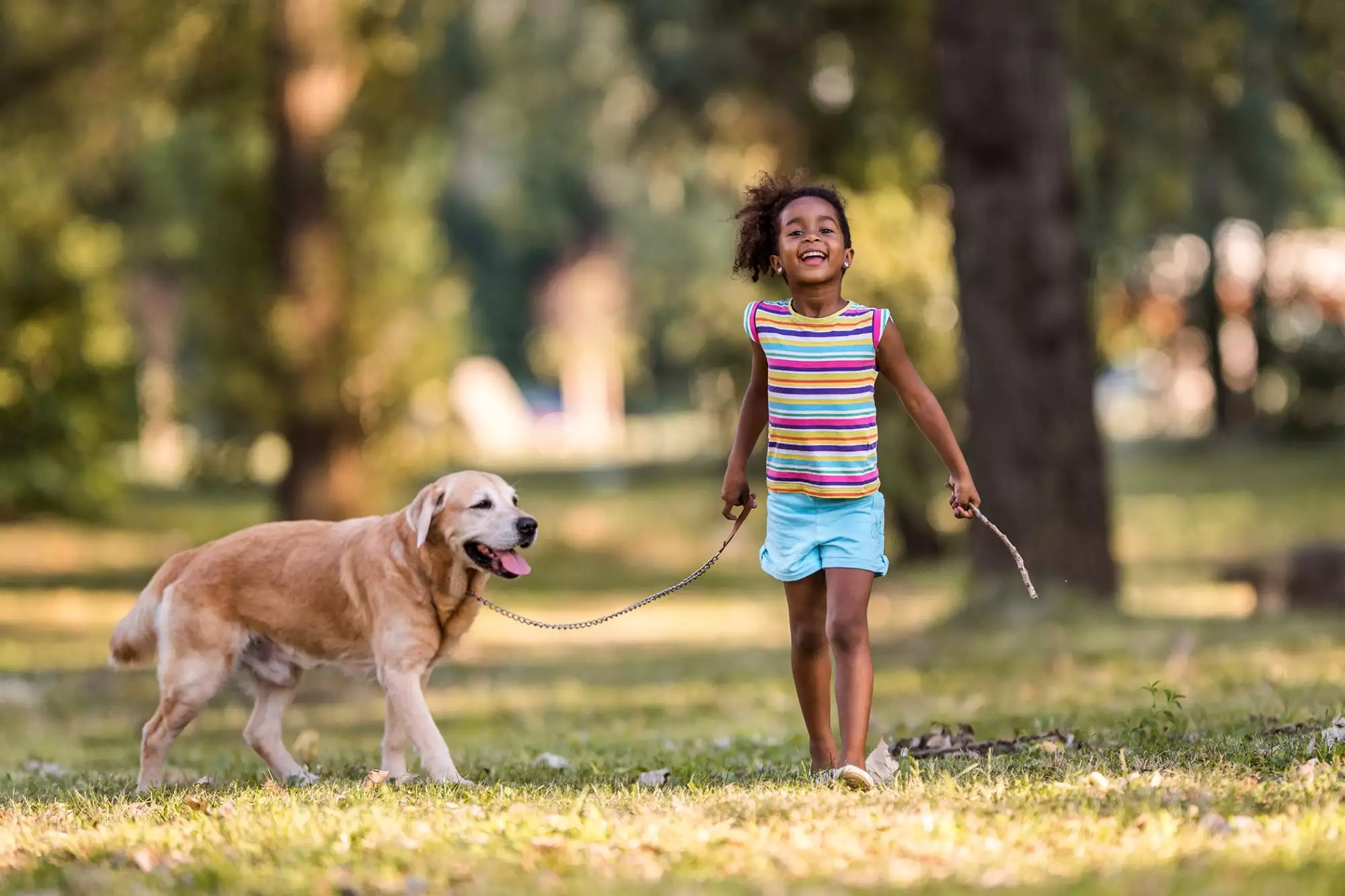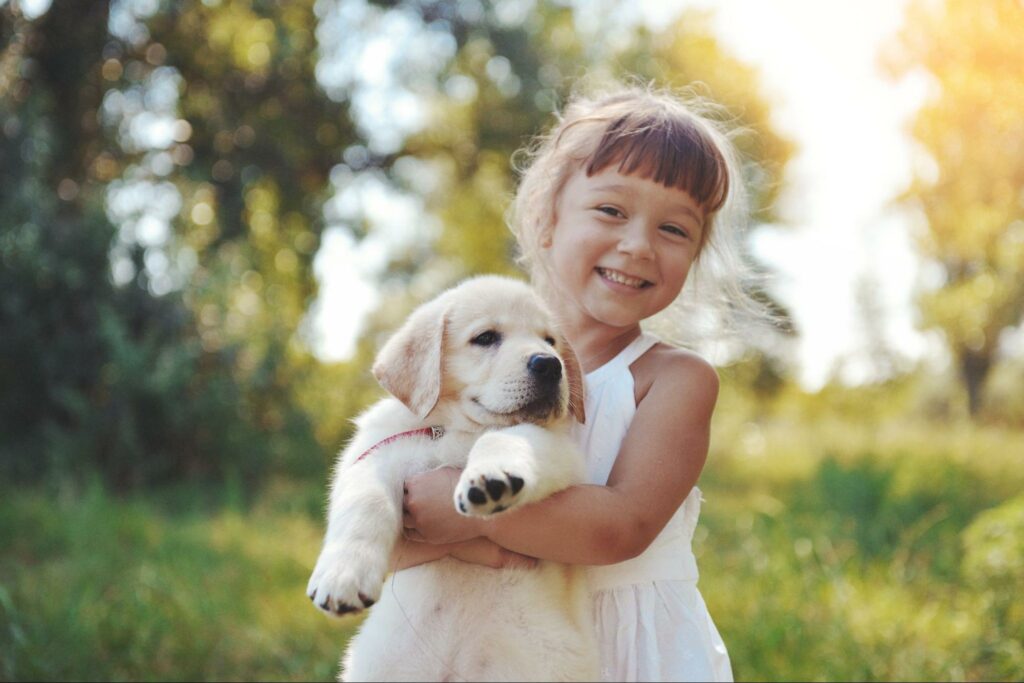Getting A Kid Friendly Dog

Parents need to think about a few things when they’re looking for a dog that is good with kids. There are a lot of things to think about when choosing a dog that is safe, nice, and good with kids. It’s an important and fun process. In the parts that follow, we’ll talk about some of the most important things that every parent should think about before getting a pet friend.
Energy Levels and Exercise Requirements of Different Breeds
Before getting a new animal friend, it’s important to know how much energy they have and how often they need to exercise. Every breed has different needs, so it’s important to pick a type that will work with the way your family lives. We’ll talk about the energy levels and exercise needs of some popular dog types in this article to help you find the right dog for your family.
Plenty of Exercises Needed for All Breeds
As a good pet owner, you need to know that exercise is very important for all dogs, no matter what breed they are. Giving your dog daily exercise is important for both their physical and mental health.
Dog breeds have different amounts of energy, and to keep them healthy and happy, they need to get the right amount of exercise. Dogs like Labradors and Bernese Mountain Dogs are big and lively, so they need to play and exercise a lot every day. They need to be physically active every day to stay in shape because they are big and strong.
Some dog breeds, like the Cavalier King Charles Spaniel and the Soft-Coated Wheaten Terrier, have less energy and will do better with mild activity. Even though they might not need as much physical exercise, it’s important to keep their minds busy every day by playing with them, teaching them, and taking walks.
It’s important to keep their minds and bodies active every day, no matter what breed they are. Dogs that go for walks, play, and do other physical activities on a regular basis will stay healthy and flexible. They will also avoid behavior problems that can happen when they are bored or don’t have enough to do.
Varying Energy Levels Among Breeds
It’s important to think about how active the dog will be when picking the right breed for your family. Some dog breeds are very active and need a lot of mental and physical stimulation to do well. Other breeds are less active and might be better for families who don’t do as much.
Even so, it’s important to remember that different breeds can have different amounts of energy. Some Border Collies may be less active than others, even though the breed as a whole is known for having a lot of energy.
The Labrador Retriever, the Border Collie, and the Australian Shepherd are all dogs that have a lot of energy. These dogs are very active and need to be kept happy and healthy by giving them lots of exercise. Running, climbing, and playing fetch are things they love to do. These dog types also need mental stimulation, so training and activities like agility classes can help keep them busy.
Finding the Right Breed for Your Family
A big choice needs to be made: what dog breed is best for my family? In addition to making sure the dog fits in with how your family lives, you should also pick a breed that is known to be good with kids. This piece will talk about the different types of dogs that are good for families with kids, how active they are, and how much mental and physical stimulation they need. Taking all of these things into account will help you choose the breed that is best for your family.
Taking Size, Activity Level, and Temperament Into Account
First, when choosing a family dog, size does count. Bernese Mountain Dogs and Golden Retrievers are examples of big dogs that might need more room inside and a bigger yard to run and play. Plus, bigger dogs often need more food and medical care, which can add to the long-term costs. People who live in houses or smaller homes might do better with smaller dogs, like the Soft-Coated Wheaten Terrier or the Cavalier King Charles Spaniel. Most of the time, they also have lower continued costs.
Second, the amount of exercise is another important thing to think about. The Irish Setter and other dogs that need a lot of movement and mental stimulation need a family that can keep up with them. A family that likes to go for walks, do things outside like climbing, or live a busy life may do better with a more active dog breed. However, people who don’t do a lot of physical action might like a breed like the Bichon Frise, which is much more laid-back and doesn’t need as much exercise.
Finally, a dog’s personality is very important when picking one as a family pet. The Labrador Retriever and other dogs that are friendly and love people make great family pets. Many people call them “nanny dogs” because they are so good at watching over kids and are patient and gentle with them. More energetic and playful dogs like the mixed breed or the Boxer may be better suited to families with older children who are better able to handle their exuberance.
Determining the Best Companion For Children
Getting a kid friendly dog? Choosing the perfect dog for your child can be a very exciting decision, but it requires a thorough consideration of various factors. The right breed of dog can be an excellent companion for your child while also serving as a loyal and loving family pet. Here are some dog breeds known for their compatibility with children, as well as the traits that make them suitable for children.
Golden Retrievers are an excellent choice for families with children due to their friendly, obedient, and intelligent nature. These dogs are patient and gentle with children, making them popular family companions. They are also great with other pets and eager to please their owners.
Beagles are another wonderful family pet and excellent companions for children. Affectionate and playful, Beagles are also known for their loyalty and adaptability. These dogs do require some exercise, but they are relatively small and adaptable to different living situations.
Irish Setters are a high-energy breed known for their loyalty and friendliness. These dogs are perfect for families with active lifestyles and lots of room to run and play. Irish Setters are intelligent, obedient, and highly social creatures, making them great companions for children.
If you desire a smaller dog, Pugs and French Bulldogs are both great choices when it comes to compatibility with children. These breeds are incredibly affectionate and love to spend time with their families, but they also require minimal exercise. However, it is essential to monitor their activity levels and prevent them from gaining weight.
Soft-Coated Wheaten Terriers are another small breed that is ideal for families with children. These dogs are friendly, playful, and hypoallergenic, making them perfect for households with allergy sufferers. However, they do require frequent grooming to maintain a healthy coat.
When selecting a dog breed as a companion for children, it is crucial to consider its size, temperament, exercise requirements, and energy level. Take the time to research different breeds and select one that best fits your family’s lifestyle and personality. With the right companion by your child’s side, they can experience a loving and loyal companion like no other.
Tips on Bringing Home A New Dog with Kids in the Household
Bringing home a new dog is an exciting experience, especially if you have kids in the household. Having a furry companion can bring endless joy and love to your family. However, it’s crucial to prepare properly and choose the right breed that is kid-friendly and suits your family’s lifestyle. This article will provide you with tips on bringing home a new dog with kids in the household, ensuring a smooth and happy transition for everyone.

Setting Up Boundaries and Rules Early On
When it comes to bringing a new dog into a household with kids, it is important to set up boundaries and rules early on. This not only helps establish parental authority over the family pet, but it also teaches children and dogs acceptable behavior around one another.
Establishing house rules upfront can go a long way in preventing any conflicts that may arise between the dog and the children. For instance, setting up boundaries such as no climbing onto furniture can prevent accidents involving playful dogs and kids. Similarly, rules such as not pulling the dog’s tail or ears can ensure that the dog is treated with respect and kindness.
Positive reinforcement is also a crucial component of setting up boundaries and rules for the new family dog. This means rewarding good behavior with treats or praise to reinforce positive behavior. This not only helps dogs learn how to behave around children, but it also reinforces parental authority over the family pet.
Introducing New Dogs to Kids Safely
Introducing a new dog to your family can be an exciting experience, but it’s important to take the necessary safety precautions, especially when kids are involved. Depending on the breed and temperament of the dog, it may take some time for them to become comfortable with children in their space, so it’s important to introduce them slowly and carefully.
Start by introducing the dog to your family members one at a time before allowing them to be together. This helps the dog become more familiar with each family member and helps build trust. When it comes to introducing the dog to kids, teach your children to approach the dog calmly and gently, avoiding sudden movements or loud noises.
While introducing the dog to the kids, always supervise their interactions. Children should be taught to respect the dog’s boundaries and to avoid overwhelming them with too much attention. Some dogs may need more time to get comfortable with children, so be patient and don’t force the interaction. Gradually increase the amount of interaction between the dog and kids as they become more comfortable with each other.
Conclusion
In conclusion, bringing a dog into the family is a big decision that should not be taken lightly. It’s important to teach kids to respect dogs and understand the boundaries that should be respected to keep both the dog and the children safe. Children should be taught not to approach unfamiliar dogs and to avoid pulling on their tails or ears.
